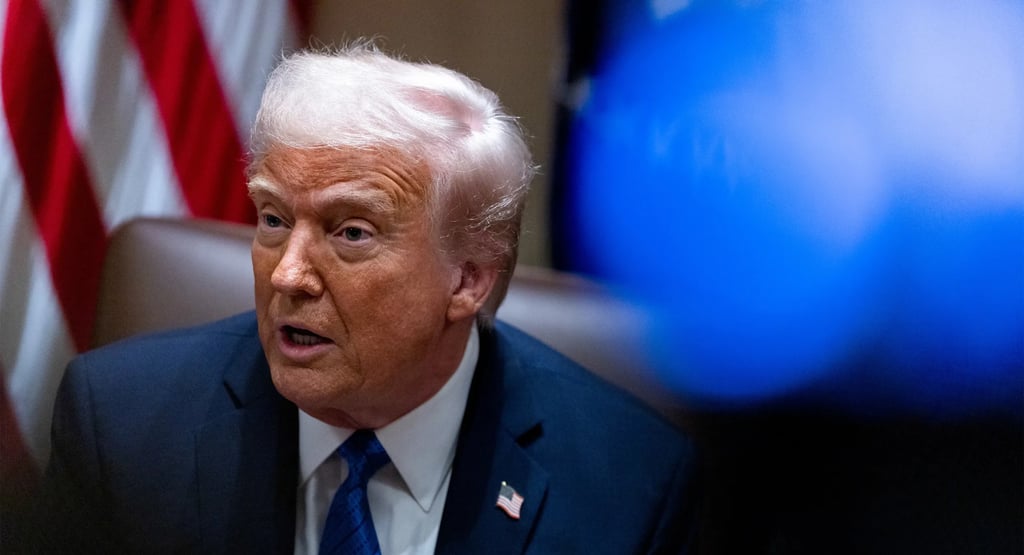Trump’s Ceasefire Gambit: Strategic Diplomacy or Political Optics?
Donald Trump’s proposed 30-day unconditional ceasefire in Ukraine has sparked global attention—but is it a serious diplomatic effort or a calculated political move as he eyes a return to the White House?
OPINIONPOLITICS
Emmanuel Makome
5/9/20252 min read


A Ceasefire With Conditions Disguised as “Unconditional”?
Former President Donald Trump’s call for an “unconditional” 30-day ceasefire in Ukraine is already being treated with scrutiny—both in Washington and in Kyiv. While his proposal may sound like a step toward peace, its timing, framing, and potential enforcement mechanisms raise serious questions. Is Trump genuinely attempting to broker a path to end the war—or is this about reasserting global leadership just as the 2024 U.S. election cycle intensifies?
For a candidate often criticized for cozying up to authoritarian leaders, this proposal gives Trump an opportunity to reposition himself as a broker of stability and peace. But Ukraine’s immediate experience on the battlefield—with over 700 reported Russian violations in just 12 hours—undermines any hope that such a ceasefire could be enforced without teeth.
Political Timing and Trump’s Image Abroad
Trump’s diplomatic push comes at a time when his campaign is looking for a foreign policy win. The optics of a successful ceasefire—however temporary—could bolster his image as a dealmaker who can do what President Biden hasn't: bring the war closer to resolution. He’s already laying the groundwork by connecting with European leaders like Germany’s Friedrich Merz and signaling alignment with traditional allies.
However, this move also allows Trump to reposition himself as more multilateral than expected. Supporting European diplomatic initiatives, while also pressuring Ukraine and Russia alike, gives him the leverage of a "middleman" without actually committing to long-term military or economic support.
Risks of Oversimplification
The danger of Trump’s proposal lies in its oversimplification. The war in Ukraine is not merely a standoff between two armies—it is an existential fight for sovereignty, law, and democratic values. A “pause” without addressing Russia’s territorial ambitions, its occupation of Ukrainian land, or the broader NATO security implications could easily be exploited by the Kremlin to regroup.
Moreover, Trump’s threat of imposing “further sanctions” if the ceasefire is broken lacks clarity. What are these sanctions? Will they be coordinated with allies? And what role does Congress play in a ceasefire that may require U.S. guarantees?
A Calculated Risk or a Miscalculated Step?
By offering a ceasefire, Trump places pressure on Biden’s administration, which has thus far avoided direct negotiations with Russia. If Biden opposes or downplays Trump’s proposal, it could be framed as being "anti-peace" in the court of public opinion. If Biden supports it, Trump will claim credit for leadership. Either way, Trump scores political points.
But the risk is that such diplomacy—if not followed by real enforcement or progress—could undermine Ukraine’s position, weaken Western unity, and embolden Putin to test the limits of Western resolve during the 30-day pause.
Conclusion: Strategic Optics Over Sustainable Outcomes?
Trump’s call for a ceasefire is politically sharp but diplomatically shallow unless backed by enforcement mechanisms, multilateral agreement, and credible monitoring. For Ukraine, the ceasefire could offer temporary respite—or it could give Russia an edge. For Trump, it’s a win-win either way—unless the situation unravels publicly.
Whether this move is a sincere step toward peace or a maneuver in his campaign playbook, one truth remains: wars are not won—or stopped—on phone calls alone.
Photo: SHAWN THEW/EPA/BLOOMBERG VIA GETTY IMAGES
MORE NEWS
© 2025. Ke Press Global. A Ke Harbor Company. All rights reserved.
FOLLOW KE PRESS GLOBAL ON :
Contact us


